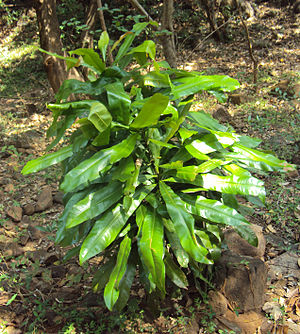Difference between revisions of "Category:Ancistrocladaceae"
Jump to navigation
Jump to search
(move from article space) |
({{Inedible family}}) |
||
| Line 16: | Line 16: | ||
}} | }} | ||
| − | + | {{Inedible family}} | |
| − | + | The family consists of a single genus, '''''Ancistrocladus''''', of [[lianas]], found in the tropics of the Old World. | |
| − | The | ||
| − | |||
| − | |||
| − | |||
| − | |||
| − | |||
| − | |||
| − | |||
| − | |||
| − | |||
| − | |||
| − | |||
| − | |||
| − | |||
| − | |||
| − | '' | ||
| − | |||
| − | |||
| − | |||
| − | |||
| − | |||
| − | |||
| − | |||
| − | |||
| − | |||
| − | |||
| − | |||
| − | |||
| − | |||
| − | |||
| − | |||
| − | |||
| − | |||
| − | |||
| − | |||
| − | |||
| − | |||
| − | |||
| − | |||
| − | |||
| − | |||
| − | |||
| − | |||
| − | |||
| − | |||
==References== | ==References== | ||
Latest revision as of 12:34, 2 October 2020
| Ancistrocladaceae | |
|---|---|

| |
| Ancistrocladus heyneanus | |
| Scientific classification | |
| Kingdom: | |
| (unranked): | |
| (unranked): | |
| (unranked): | |
| Order: | |
| Family: | Ancistrocladaceae |
| Genus: | Ancistrocladus |
| Species | |
|
See text | |
Ancistrocladaceae is a family of plants with no known edible members.
The family consists of a single genus, Ancistrocladus, of lianas, found in the tropics of the Old World.
References
- ↑ Angiosperm Phylogeny Group (2009), "An update of the Angiosperm Phylogeny Group classification for the orders and families of flowering plants: APG III", Botanical Journal of the Linnean Society, 161 (2): 105–121, doi:10.1111/j.1095-8339.2009.00996.x, retrieved 2010-12-10
- anti-AIDS source
- Taylor, Charlotte M.; Gereau, Roy E. & Walters, Gretchen M. (2005). "Revision of Ancistrocladus Wall. (Ancistrocladaceae)". Annals of the Missouri Botanical Garden. 92 (3): 360–399. JSTOR 40035478.[1]
- Thomas, Duncan W.; Gereau, Roy E. (1993). "Ancistrocladus korupensis (Ancistrocladaceae): A New Species of Liana from Cameroon". Novon. Novon, Vol. 3, No. 4. 3 (4): 494. doi:10.2307/3391401. JSTOR 3391401.[2]
- Cheek, M. (2000a). A synoptic revision of Ancistrocladus (Ancistrocladaceae) in Africa, with a new species from western Cameroon. Kew Bulletin
External links
- Ancistrocladaceae in L. Watson and M.J. Dallwitz (1992 onwards). The families of flowering plants: descriptions, illustrations, identification, information retrieval. Version: 30 May 2006. http://delta-intkey.com
- NCBI Taxonomy Browser
This category currently contains no pages or media.